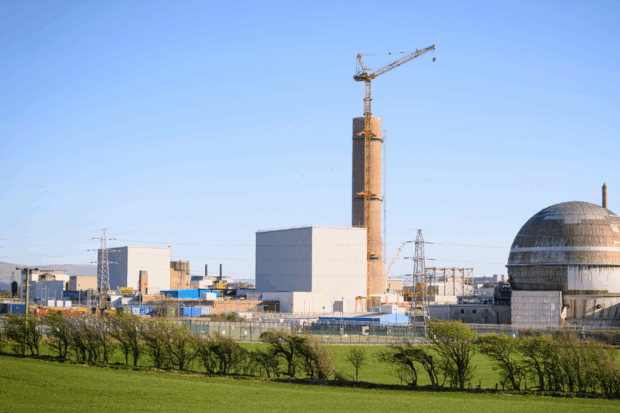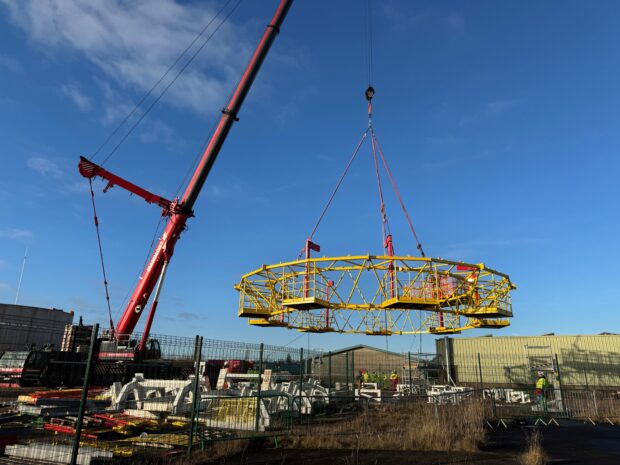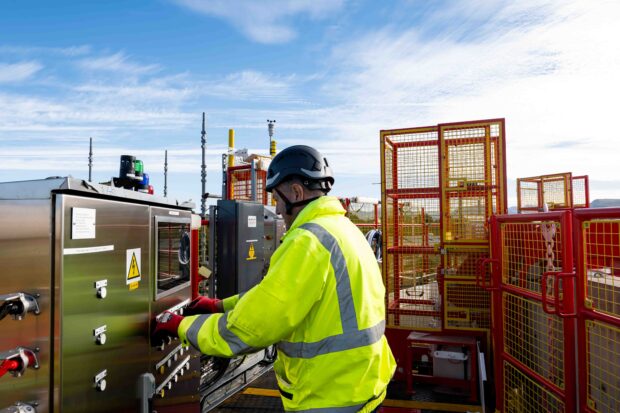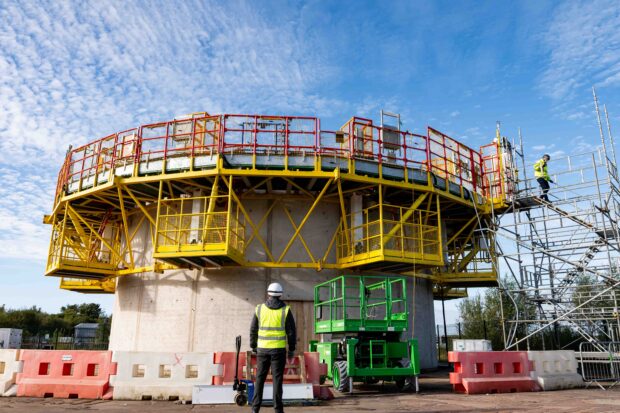From outside the gates of Sellafield it could look like progress in the demolition of the Windscale Pile 1 chimney has stalled. The tower crane that helped to lower the blocks of concrete that made up the filter gallery at the top of the chimney stands still and the barrel of the chimney remains.

To the casual observer, it could seem like little progress is being made in its removal. But that perception couldn’t be further from the truth.
Just up the road, out of public view, a replica chimney has been created. Around it, teams of engineers, designers, and specialists are hard at work - practicing, trialling, and testing the tools and techniques that will one day bring what’s left of the real chimney down.
At the heart of this effort is SPIDA: the Suspended Platform with Incremental Descent Developed by ADAPT. It’s not just a machine - it’s a symbol of how Sellafield Ltd is using innovation and rigorous testing to tackle one of the site’s most complex decommissioning challenges.
Why testing and trialling matter
In high-hazard environments like we have at Sellafield, testing and trialling aren’t optional - they’re essential. These processes allow teams to:
- De-risk operations by identifying potential issues before they occur onsite.
- Refine designs through real-world feedback and iterative improvement.
- Build confidence in safety, reliability, and performance.
- Accelerate delivery by resolving problems early and improving schedule certainty.
This philosophy is especially critical when dealing with legacy infrastructure like the Pile 1 chimney, which was built in the 1940s and contaminated during the 1957 Windscale fire. Its demolition requires precision, control, and a deep understanding of how materials and machinery will behave in practice - not just in theory.

This philosophy is especially critical when dealing with legacy infrastructure like the Pile 1 chimney, which was built in the 1940s and contaminated during the 1957 Windscale fire. Its demolition requires precision, control, and a deep understanding of how materials and machinery will behave in practice - not just in theory.
SPIDA: innovation in motion
SPIDA is a bespoke, doughnut-shaped platform designed to wrap around the chimney’s outer diameter. Supported by nine hydraulic actuators, it descends incrementally as blocks of the chimney barrel are cut and removed. The platform’s design allows for safe, controlled demolition from the top down - minimising risk while maximising efficiency.

But before SPIDA ever touches the real chimney, it’s being put through its paces on the replica. The recent energisation of the platform marked a major milestone, following months of manufacturing, construction, and offsite problem-solving. Factory acceptance testing is now underway, including diamond wire cutting of concrete blocks to simulate the demolition process.
The payoff of preparation
The benefits of this offsite testing are already clear:
- Engineering challenges resolved early, saving time and cost.
- Design improvements implemented based on real-world feedback.
- Schedule confidence is achieved, thanks to proactive issue resolution.
This isn’t just about ticking boxes - it’s about ensuring that when SPIDA is deployed on the chimney, it performs flawlessly. Every test, every trial, every tweak brings the team one step closer to full remediation.

A changing skyline
The eventual removal of the Pile 1 chimney will be a transformative moment for Sellafield and West Cumbria. It will mark the end of a chapter in the UK’s nuclear history and the beginning of a new, safer future. But that change is already underway - just not where most people are looking.
Behind the scenes, in workshops and test bays, innovation is unfolding. SPIDA is proof that progress doesn’t always happen in plain sight. Sometimes, it’s the quiet work - the testing, the trialling, the refining - that makes the biggest impact.
Leave a comment